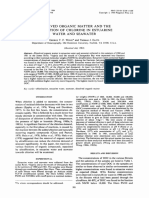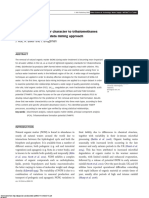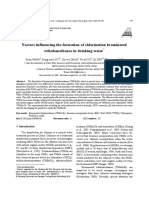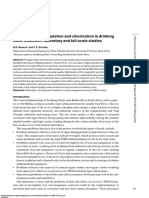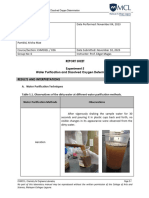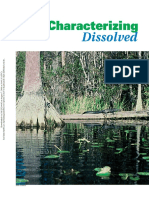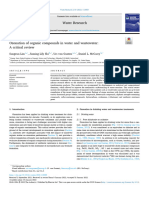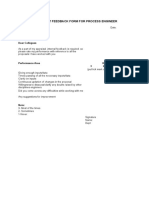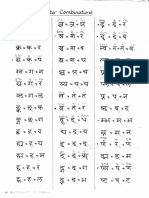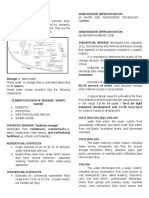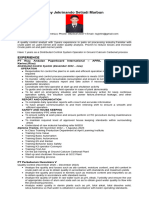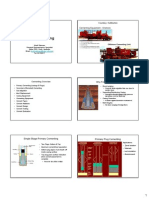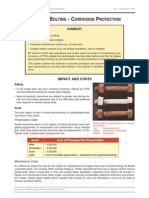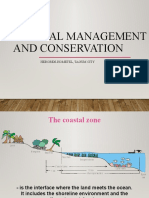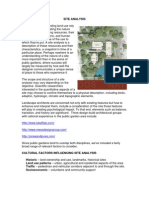The Malaysian Journal of Analytical Sciences, Vol 10, No 2 (2006): 243-250
DISSOLVED ORGANIC MATTER AND ITS IMPACT ON THE CHLORINE
DEMAND OF TREATED WATER
Lim Fang Yee1, Md. Pauzi Abdullah1, Sadia Ata1 and Basar Ishak2
1
School of Chemical Sciences and Food Technology, University Kebangsaan Malaysia, 43600 Bangi,
Selangor Darul Ehsan.
2
Semenyih River Water Treatment Plant, P.O. Box 27, 43807, Dengkil.
Abstract
Dissolved organic matter (DOM) in natural waters is a complex mixture of compounds and contains most of the
reduced carbon in aquatic ecosystems. DOM is ubiquitous in surface water and cannot be easily treated or disinfected
using the conventional treatment. DOM in the water samples from Semenyih River Water Treatment Plant were
isolated and fractionated using resin adsorbents into six classes. These classes are operationally categorized as
hydrophilic acid, hydrophilic neutral, hydrophilic base, hydrophobic acid, hydrophobic neutral and hydrophobic base.
The increase of DOM presents a challenge for drinking water management because DOM could lead to the formation of
carcinogenic disinfection by products (DBP). The concentration of DOM and the effectiveness of unit process along the
treatment plant were studied. The evolution of chlorine demand and the trihalomethanes formation potential in the
sample of all the DOM fractions was also monitored. Experiments showed that the water samples with higher DOM
concentration are found to have a higher chlorine demand and the formation of trihalomethanes. It can be concluded
that DOM can be characterized as a function of chlorine demand. Hydrophilic neutral and hydrophobic acid fractions
were found to play an important role in causing a high chlorine demand. The identification and the specific elimination
of DOM in the water responsible for the chlorine demand would resolve most of the problems related to the formation
of the DBP.
Keywords: Dissolved organic matter, chlorine demand, Semenyih River water treatment plant, trihalomethanes
formation potential
Abstrak
Jirim organik terlarut (DOM) dalam air semulajadi merupakan campuran yang kompleks dan mengandungi kebanyakan
karbon terturun dalam ekosistem akuatik. DOM hadir dalam air permukaan dan tidak dapat dirawat dan disingkirkan
dengan menggunakan kaedah perawatan yang tradisional. DOM dalam sampel air dari loji pembersihan air Sungai
Semenyih diasing dan dipecahkan kepada enam kelas dengan menggunakan kaedah penjerapan resin. Kelas-kelas ini
dikategorikan sebagai asid hidrofilik, neutral hidrofilik, bes hidrofilik, asid hidrofobik, neutral hidrofobik, dan bes
hidrofobik. Peningkatan DOM dalam air memberikan cabaran kepada pengurusan kualiti air minuman kerana DOM
berupaya menghasilkan sebatian sampingan yang karsinogenik. Kepekatan DOM dan kesannya terhadap proses unit
dalam loji rawatan air dikaji. Pemonitoran juga dijalankan terhadap permintaan klorin dan keupayaan pembentukan
trihalometana dalam kesemua pecahan DOM. Keputusan eksperimen menunjukkan sampel air dengan kepekatan DOM
yang tinggi mempunyai permintaan klorin dan keupayaan pembentukan trihalometana yang tinggi. Boleh disimpulkan
bahawa DOM merupakan fungsi kepada permintaan klorin. Didapati neutral hidrofilik dan asid hidrofobik adalah
pelopor yang penting yang menyebabkan permintaan klorin yang tinggi. Pengenalpastian dan penyingkiran secara
spesifik DOM yang menyebabkan permintaan klorin dalam air membolehkan penyelesaian kebanyakan masalah yang
berkaitan dengan pembentukan sebatian sampingan disinfeksi dalam air.
Kata kunci: Jirim organik terlarut, permintaan klorin, loji rawatan air Sungai Semenyih, keupayaan pembentukan
trihalometana
Introduction
Dissolved organic matter (DOM) in surface water is a complex and heterogeneous mixture of compounds
and contains most of the reduced carbon in aquatic ecosystems and has a wide range of physicochemical
properties [1]. The study of DOM is one of the most important topics in the treatment process as it
significantly influences the operations and the managements of the water treatment plants, especially the
disinfection units. In the disinfection process with chlorine, DOM serves as a precursor to the formation of
undesirable disinfection by-products [2]. Chlorination of drinking water has been successfully used to
inactivate pathogenic organisms and it is the most widely used method of disinfection in Malaysia today.
This practice has virtually killed and removed a broad-spectrum of pathogenic micro-organisms responsible
243
�Lim Fang Yee et al. DISSOLVED ORGANIC MATTER
for waterborne diseases [3]. However chlorinating water that has not first been treated to remove dissolved
organic matter produces a number of disinfection by-products (DBPs) [4,5,6]. Hence, DOM impacts on the
efficiency and effectiveness of chlorination processes and on the final water quality reached the customer
tap.
It is generally known that DOM is a major cause of odor and color in the surface water [7]. DOM also acts
as an important precursor of DBPs [8-11] and enables the micro-organism to grow in the water treatment
plant and the distribution system [12,13]. During chlorination, the chlorine reacts with DOM present in
water. The reaction produces various DBP mainly trihalomethanes (THMs), haloacetic acids (HAAs) and
haloacetonitriles (HANs). The reaction is reflected in the following equation:
Chlorine + DOM → THMs + HAAs + HANs + Chloral hydrate + halopropanones
+ Cyanogen halides + chloropicrin
DOM has been defined as the material that can pass through a 0.45-µm pore size membrane filter paper
[14]. The definition that is related to the material consists of truly dissolved molecules and colloidal organic
matter [15,16]. DOM is an aggregate parameter and it is not a direct indicator of the organic compounds act
as precursor of DBPs. In order to further understand the role and chemistry of DOM in surface water, it is
often necessary to fractionate DOM. A wide range of procedures has been used to fractionate DOM from
surface water [17,18]. Various methods have been used to fractionate DOM from natural water. The
ordinary methods are using the macroporous resins [19], by ultrafiltration [20] and by gel filtration [21,22].
Adsorption techniques utilizing various resins have been proven to be useful in the fractionation analysis
[23].
An extraction protocol that utilizes sequential hydrophobic and ion exchange resin sorption steps has been
developed that simultaneously extracts and concentrates DOM into hydrophobic acid (HPOA), hydrophobic
base (HPOB), hydrophobic neutral (HPON), hydrophilic acid (HPIA), hydrophilic base (HPIB) and
hydrophilic neutral (HPIN) fractions [24]. This method is based on the separation of the hydrophilic-
hydrophobic and acidic-base breaks to evaluate the characteristic of DOM in the surface water. The
fractionation allows a thorough understanding of the chlorine consumption and the formation of DBPs
during the water treatment process. The characterization of the specific DOM fraction and the removal of
DOM fraction responsible for the chlorine demand are important to enhance the drinking water quality and
it will help source management and process selection for the drinking water supply. Knowledge about the
reaction between chlorine and DOM and the chlorine dosage control are essential to establish the optimal
treatment strategy for the introduction of advanced water treatment in Malaysia.
The purpose of this study were (i) to quantify and qualify the DOM in the surface water, (ii) to fractionate
DOM, which plays the role of chlorine demand in the unit process along the treatment plant (iii) to measure
trihalomethanes formation potential (THMFP), and (iv) to examine the relationship between DOM fraction
and chlorine demand.
Experimental
Semenyih river water treatment plant
Water samples were taken from the Semenyih river water treatment plant (SRWTP) located in Precint 19,
Putrajaya, Malaysia. The SRWTP is one of the largest water treatment plant in Malaysia and has an average
treated water production of about 140-145 million gallons per day (mgd). The SRWTP is supplying treated
water to most of the major city in Selangor which serves more than 1 million inhabitants living in this
region. The SRWTP was design to produce quality water complying with drinking water standard. The
water treatment processes involved in SRWTP are coagulation, flocculation, sedimentation, filtration,
fluoridation and chlorination. In this study, there were four main sampling points along the processes of the
water treatment plant. These were raw water, settled water, filtered water and treated water. The study was
carried out from January to October 2005 and the samplings were performed once a month.
Analytical methods
Sample collection and preservation. The samples were collected in 1 L amber glass vials capped with
Teflon-faced septum. Samples were carefully transferred to the laboratory in an ice cooler and stored at 4°C
to minimize changes in the constituents. They were brought back to room temperature prior to examination.
Samples were prepared by filtering through a 0.45µm membrane and were ready for analysis.
244
� The Malaysian Journal of Analytical Sciences, Vol 10, No 2 (2006): 243-250
THMFP. Seven-day THMFP measurement was determined in accordance with the protocol in the Standard
Methods 5710B [25]. The solutions were buffered by phosphate solution at pH 7. The test was conducted
by estimating the chlorine demand of each sample. The samples were then chlorinated with an excess of
free chlorine and stored in the dark at 25°C for 7 days. At the end of 7 days reaction period, the free
chlorine residual was measured using N,N-diethyl-p-phenylenediamine (DPD) colorimetric method.
Samples must have a remaining 3-5 mg/l of free residual chlorine. THMFP were then analyzed by purge
and trap coupled with capillary column gas chromatograph with electron capture detector. Hewlett-Packard
HP5690 series II gas chromatograph with HP chemstation was used to generate THM data.
Chlorine demand. Free residual chlorine was analysed, in triplicate, by using the DPD colorimetric method
to determine chlorine demand. 7 days chlorine consumption was measured in accordance with Standard
Methods 5710 B. Chlorine demand of the samples were calculated as follows:
Chlorine demand (mg/l) = Initial chlorine concentration – Chlorine residual after 7 days
Dissolved organic carbon (DOC) analysis. DOC concentration was measured by ultraviolet irradiation
activation using AnaTOC analyzer. This oxidation method provide rapid and precise measurement of DOC
in the water as describe in Standard Methods 5310 C. Water samples were filtered through a prewashed
0.45 µm membrane prior to analyzing DOC to remove the suspended particles. At least three replications
were made for each sample.
Isolation and fractionation procedure. Column chromatography was used to fractionate DOM in waters
into 6 fractions: hydrophobic acid (HPOA), hydrophobic base (HPOB), hydrophobic neutral (HPON),
hydrophilic acid (HPIA), hydrophilic base (HPIB) and hydrophilic neutral (HPIN). A non-ionic DAX-8
resin column adsorbs hydrophobic compounds, a cationic resin adsorbs bases and a weak anionic resin
adsorbs HPIA fraction. The amount of the DOM fraction adsorbed in each resin is quantified by measuring
the effluent and the influent of each column. The sequence and adsorption procedure used is adapted by
Leenheer [24] and Marhaba et al. [26]. In this work, the sample was adjusted to pH 7 and passed through
the DAX-8 column. The HPON fraction was extracted out by using methanol. After that, the pH of the
sample was adjusted to 10 and passing through the second DAX-8 resin column. HPOB fraction was
retained and was eluted by hydrochloric acid. The effluent was then acidified to pH 2 and passed through
the third DAX-8 column. The HPOA fraction was collected by eluting from resin with sodium hydroxide.
The sample passed through the AG-MP-50 resin column and HPIB was eluted with sodium hydroxide. The
effluent was then passed through the column containing WA-10 resin. The effluent was collected as the
HPIN fraction and the adsorbent was eluted by sodium hydroxide as HPIA fraction. The conditions under
which the fractionations were carried out were controlled carefully.
Results and Discussion
Characterization of DOM
The DOM of the water samples were divided into six different fractions, resulting in a unique
physicochemical signature of the various samples that were sampled. Details of percentage of the DOM in
each process along the SRWTP are illustrated in Fig. 1. The distribution proportion of all the DOM
fractions is almost the same in every process. In every sample, HPIN was predominant compared to the
other fraction. The proportion of DOM fraction in all the samples could be summarized from the highest to
the lowest were HPIN, HPOA, HPIA, HPIB, HPON and HPOB. These results showed a non-noticeable
reduction of all the fractions along the treatment process but the concentration of each fraction was reduced
steadily.
245
�Lim Fang Yee et al. DISSOLVED ORGANIC MATTER
Raw Settled
HPIA HPON HPIB HPIA HPON
HPIB 13% 5% HPOA 5% 9% 4% HPOA
7% 22% 28%
HPOB
HPOB
3%
HPIN HPIN 1%
50% 53%
Filtered Treated
HPIB HPIA HPON HPIA HPON
5% HPIB 12% HPOA
6% 9% HPOA 3%
7% 24%
26%
HPOB
HPOB 2%
HPIN 4% HPIN
50% 52%
Fig. 1 Percent distribution of DOM along the process of treatment
According to the data shown in Fig. 1, the average distribution percentage of HPIN was the highest.
Possible constituents of the HPIN fraction include organic compounds make up of ketones, esters,
polysaccharides and aldehydes. These signatures indicate that the HPIN byproducts predominate the
metabolic pathways in both naturally occurring and wastewater ecosystem in Semenyih river basin. The
results from Fig. 1 probably show that raw water from Semenyih river contains more hydrophilic fraction
than hydrophobic fraction. This indicated that the raw water from Semenyih river was contaminated mainly
by proteinaceous material, polysaccharides, hydroxyl acids and carboxylic acids.
The recovery efficiency of the fractionate DOM was investigated and could be used in isolating the DOM
in the water samples in SRWTP. The effectiveness of the fractionation procedure in this study gave a 12 to
15% tolerance of DOM recovery. The percentage of tolerance was measured using the total of the fractions’
mass compared to the original unfractionated samples. The result showed 15 % tolerance for the raw water,
14 % for the settled water and 12 % for the filtered and treated water. The fractionation technique used in
this study was considered acceptable as previous reported experience with resin based DOM fraction
resulted in 10-15 % tolerance of DOM recovery [27].
THMFP and DOM
The existence of DOM in the SRWTP implies that there is a possibility that THM will be formed if chlorine
is dosed. It is known that different surface water may vary significantly with respect to concentration and
DOM fraction which act as the precursors for THM formation. THMs evaluated in this study were the sum
of four THM species which were chloroform (CHCl3), bromodichloromethane (CHCl2Br),
dibromochloromethane (CHClBr2) and bromoform (CHBr3). However, two brominated species,
dibromomochloromethane and bromoform were not detected in this study. Fig. 2 displays the total THMFP
obtained from each DOM fraction.
246
� The Malaysian Journal of Analytical Sciences, Vol 10, No 2 (2006): 243-250
Settled
Raw
HPIA HPON HPIA HPON HPOB
HPOB 4%
11% 5% 12% 14%
HPIB 16% HPIB
15% 17%
HPOA
HPOA
20%
HPIN 22% HPIN
31% 33%
Filtered Treated
HPIA HPON HPIA HPON
HPOB HPOB
13% 7% HPIB 7% 3%
HPIB 15% 17%
19%
16%
HPOA HPOA
HPIN 20% HPIN 22%
29% 32%
Fig. 2 THMFP of fraction along the process of the treatment
HPIN fraction in this study has the highest reactivity to the formation of THM in all the samples tested.
HPOA was found to be the second reactive precursor fraction towards the formation of THM. The average
contribution for HPIN and HPOA fractions were 31% and 21%, respectively. The high reactivity of
THMFP of these two fractions is due to the mass distribution in the water. As shown in Fig. 1, HPIN and
HPOA fractions were the most (average of 76%) in the water samples. An interesting findings observed in
this study was the THMFP of HPOB and HPIB fractions. The THMFP of HPOB and HPIB fraction were
greater in general compared to the percentage of mass distribution in the water samples. This shows the
reactivity of HPOB and HPIB fractions to form the THM during the chlorination process although they
were not the main component of DOM fractions. Fig. 2 demonstrates the reactivity of THMFP from each
DOM fraction in all the samples follow an order from high to low as: HPIN, HPOA, HPIB, HPOB, HPIA,
HPON. The data in Fig. 2 is an expected result from the mass distribution of DOM fractions except for the
HPIB and HPOB fractions. The comparison between Fig. 1 and Fig. 2 illustrates the relation between the
THMFP and the mass distribution of DOM fractions. In general, higher DOM fractions concentration
produced higher THMFP.
In order to consider the reactivity of the THMFP on a per carbon basis, all the THMFP data was normalized
to the ratio between THMFP and DOM of each organic fraction to obtain specific THMFP yield.
Fig. 3 shows the concentration for the specific THMFP yields in each DOM fractions along the treatment
process. It shows the reactivity of each fraction to form the THMs. In terms of specific THMFP, HPOB and
HPIB fractions gave the highest result. This indicated that both of these fractions were reactive precursor in
forming THMs. Both HPOB and HPIB fractions were found to be present in the lowest concentration
among all the six DOM fractions. However, this study showed that even HPOB and HPIB fractions exist in
small quantities, they could lead to the formation of THM reactively. As shown in Fig. 2, HPIN was
predominant constituent in all the DOM fractions. Its THMFP was found to be quite low. This indicated
that HPIN fraction did not led to the formation of THMs reactively. However, removal of this fraction was
extremely needed as it was the main precursor in the formation of THMs. The major precursor in terms of
the specific THMFP from the highest to the lowest concentration of DOM fractions were HPOB, HPIB,
HPON, HPIN, HPIA and HPOA. This study indicated that the reactivity of the DOM fraction to form
THMs were as follow: base>neutral>acid.
247
�Lim Fang Yee et al. DISSOLVED ORGANIC MATTER
Raw Settled
800 700
600
Specific THMFP
Specific THMFP
600 500
400
400
300
200 200
100
0 0
HPON HPOB HPOA HPIN HPIB HPIA HPON HPOB HPOA HPIN HPIB HPIA
Filtered Treated
700 700
600 Specific THMFP 600
Specific THMFP
500 500
400 400
300 300
200 200
100 100
0 0
HPON HPOB HPOA HPIN HPIB HPIA HPON HPOB HPOA HPIN HPIB HPIA
Fig. 3 Specific THMFP (all the units in µg/mg)
Chlorine demand and DOM
One of the main factor influences chlorine consumption in the SRWTP is the reaction with the DOM in the
water sample. This study indicated that all the DOM fractions contribute to the chlorine demand in the
water. The concentration of DOC in each fraction had a strong correlation with chlorine demand. Fig. 4
shows the relation between chlorine demand and the DOC concentration of each organic fraction.
It was clearly observed that the DOC correlate with the chlorine demand well, which indicates that
concentration of DOM were the function of chlorine demand for the model. Table 1 lists the relations
between chlorine demand and the DOC of each organic fraction. The evaluated linear equation based on the
DOM concentration and the chlorine demand showed that the data fit the model quite well with the
correlation coefficients ranging from 0.8801 to 0.9773. Overall, the chlorine demand of the water sample is
highly depended upon the concentration of the DOM fractions.
Conclusion
This study was performed to characterize the DOM fraction along the treatment process of a treatment plant
in Malaysia. The SRWTP was selected as a study location as it is one of the largest water treatment plant in
Malaysia. The mass distribution of DOM fractions sequences from high to low were HPIN, HPOA, HPIA,
HPIB, HPON and HPOB. The reactivity of total THMFP from each organic fraction follow an order from
high to low as HPIN, HPOA, HPIB, HPOB, HPIA and HPON. The main fractions in the water source were
HPIN and HPOA. They were also the main precursor in forming total THMFP. However, in the terms of
specific THMFP, the most active species from the highest to the lowest concentration were HPOB, HPIB,
HPON, HPIA, HPIN and HPOA. Organic fractions with higher concentration could form more THMs, but
the reactivity of the formation of the THM does not follow the same trend.
248
� The Malaysian Journal of Analytical Sciences, Vol 10, No 2 (2006): 243-250
0.8
Cl demand (mg/l)
0.6
HPON
HPOB
0.4 HPOA
HPIN
0.2 HPIB
HPIA
0
0 0.5 1 1.5 2 2.5
DOC (mg/l)
Fig. 4 Chlorine demand and the DOC concentration of each fraction
Table 1 Relation between chlorine demand (Y) and DOM fraction (X)
Fraction Equation R2
HPON Y = 0.2361X + 0.1340 0.9273
HPOB Y = 1.5913X + 0.3437 0.9627
HPOA Y = 0.4249X - 0.0303 0.9773
HPIN Y = 0.2628X + 0.1363 0.9326
HPIB Y = 0.8327X + 0.2498 0.9175
HPIA Y = 0.3156X + 0.0973 0.8801
A clear linear relationship between the DOM fraction and the chlorine demand was observed. All the DOM
fractions have a similar general trend which showed good correlation between chlorine demand and the
DOM concentration. Although these six equations were developed with few data, it could be used to predict
the chlorine demand in the water. More study is required towards development of an advance treatment
process with enhanced removal of THM and its precursor and to reduce chlorine demand of raw and treated
water.
Acknowledgement
The authors gratefully acknowledge funding from the Konsortium Abass Sdn. Bhd. under research grant
STGL-011-2005. The authors also thank the cooperation of technical staffs at the School of Chemical
Sciences and Food Technology, National University of Malaysia.
249
�Lim Fang Yee et al. DISSOLVED ORGANIC MATTER
Reference
[1] Thurman, E.M. 1985. Organic geochemistry of natural waters. Martinus Nijhoff/ Dr W. Junk Publishers,
Dodrecht, The Netherlands.
[2] Singer, P.C. 1999. Formation and control of disinfection by-products in drinking water. American Water
Works Assoc. Denver, CO.
[3] White, G.C. 1992. Handbook of chlorination and alternative disinfections. 3rd Ed. New York: Van Nostrand
Reinhold Publisher, Inc.
[4] Miles, A.M., Singer. P.C., Ashley, D.L., Lynberg, M.C., Mendola, P., Langlois, P.H. & Nuckols, J.R. 2002.
Comparison of trihalomethanes in tap water and blood. Environ. Sci. Tech. 36: 1692-1698.
[5] Black, B.D., Harrington, G.W. & Singer, P.C. 1996. Reducing cancer risks by improving organic carbon
removal. J. Am. Water Works Assoc. 88: 40-52.
[6] Singer, P.C. & Chang, S.D. 1989. Correlations between trihalomethanes and total organic halides formed
during water treatment. J. Am. Water Works Assoc. 81: 61-65.
[7] G.A. Edwards & A. Amirtharajah. 1985. Removing color caused by humic acids. J. AWWA. 77: 50-57.
[8] T.A. Bellar, J.J. Lichtenberg & R.C. Kroner. 1974. Occurrence of organohalides in chlorinated drinking
waters. J. AWWA. 66: 703-706
[9] J.J. Rook. 1974. Formation of haloforms during chlorination of natural water. Water Treatment Examination
23: 234-243.
[10] S. Batterman, L.Z. Zhang & S.Q. Wang. Quenching of chlorination disinfection by-product formation in
drinking water by hydrogen peroxide. Water Res. 34: 1652-1658.
[11] J.S. Miller & P.C. Ugden. Characterization of non-volatile aqueous chlorination by-products of humic
substances. Environ. Sci. Technol. 17: 150-156.
[12] Siddiqui, M.S., Amy, G.L. & Murrht, B.D. 1997. Ozone enhanced removal of natural organic matter from
drinking water source. Water Res. 31: 3098-3106.
[13] Khan, E., Babcock, R.W., Suffet, I.H. & Stenstorm, M.K. 1998. Biodegradable dissolved organic carbon for
indication wastewater reclamation plant performance and treated wastewater quality. Water Environ. Res. 70:
1033-1040.
[14] Zsolnay, A. 2003. Dissolved organic matter: artefacts, definitions and functions. Geoderma 113: 187-209.
[15] Buffle, J. & Leppard, G.G. 1995. Characterization of aquatic colloids and macromolecules. 1. Structure and
behaviour of colloidal material. Environ. Sci. Technol. 29: 2169-2175.
[16] Gustafsson, O. & Gschwend, P.M. 1997. Aquatic colloids: Concepts, definitions and current challenges.
Limnol. Oceanor. 42: 519-528.
[17] Thurman, E.M. & Malcolm, K.L. 1981. Preparative isolation of aquatic humic substances. Environ. Sci.
Technol. 16: 463-466.
[18] C.W.K. Chow, J.A. van Leeuwen, M. Drikas, R. Fabriks, K.M. Spark & D.W. Page. 1999. The impact of the
character of natural organic matter in conventional treatment with alum. Water Sci. Technol. 40: 97-104.
[19] Vance, G.F. & David, M.B. 1991. Chemical characteristics and acidity of soluble organic substances from a
northern hardwood forest floor, Central Maine, USA. Geochim. Cosmochim. Acta 55: 3611-3625.
[20] Kainulainen, T., Tuhkanen, T., Varitianien, T., Heinonen, H. & Kalliokoski, P. 1994. The effect of different
oxidation and filtration processes on the molecular size distribution of humic material. Wat. Sci. Technol.
30(9): 169-174.
[21] Shaw, P.J., De Haan, H., & Jones, R.I. 1994. Applicability and reliability of gel filtration to study aquatic
humic substances revisited: the effects of pH on molecular size distributions. Envinron. Technol. 15: 753-764.
[22] Bruchet, A., Rousseau, C. & Mallevialle, J. 1990. Pyrolysis-GC-MS for investigating high-molecular-weight
THM precursors and other refractory organics. J. AWWA. 82(9): 66-74.
[23] Leenheer, J.A. Croue, J.P., Benjamin, M., Korshin, G.V., Hwang, C.J., Bruchet, A., & Aiken G.R. 2000. In
Barrett, S.E., Krasner, S.W. & Amy, G.L. (Eds.), Natural organic matter and disinfection by-products
characterization and control in drinking water. American Chemical Society, Washington, DC. Pg 68-83.
[24] Leenheer, J.A. 1981. Comprehensive approach to preparative isolation and fractionation of dissolved organic
carbon from natural water and wastewaters. Environ. Sci. Tech. 15: 578-587.
[25] Standard methods for the examination of water and waste water. 1998. 20th ed. American Public Health
Association. AWWA & water pollution control federation.
[26] T.F. Marhaba, Y. Pu & K. Bengraine. 2003. Modified dissolved organic matter fraction technique for natural
water. J. Hazard. Mater. B 101: 43-53.
[27] G.M. Day, R. Beckett, B.T. Hart & I.D. Mchelvie. 1991. Characterization of natural organic matter from four
Victorian freshwater systems. Australian J. Marine Freshwater Res. 42(6):675-687. ↵
250







